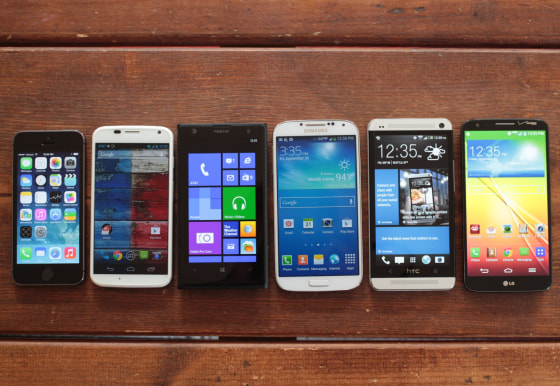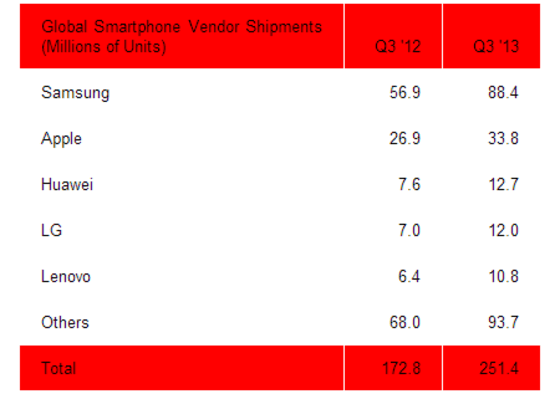Cellcom

I can almost guarantee you've never used a camera like the Sony QX10 before. A camera attachment for your smartphone that already has a built-in camera, you say? Isn't that redundant? For the most part, yes, but using the lens-shaped camera together with a smartphone is just so weird — and different — that it makes photography feel refreshing again.
Sony has two lens-camera models up its sleeve: the QX10 and the higher-end QX100. Aside from the obvious price difference ($250 for the QX10, $500 for the QX100), the QX10 has fewer megapixels (18.2 vs. 20.2), a smaller image sensor (1/2.3-inch vs. 1.0-inch), smaller maximum aperture (f/3.3 vs. f/1.8) and no manual focus.
For this review, I'll be taking a look at the QX10, the cheaper and less feature-rich of the two. Trying something new is always risky, but if there's any company that has the expertise and creativity to release such an oddball camera, it's Sony.
The Basics
As you can tell from the pictures, the QX10 is not your typical camera. Slightly smaller than the usual mirrorless kit lens, the QX10 has a 1/2.3-inch CMOS image sensor and a 10x optical zoom lens, which is on par with hardware you'd find on most sub-$300 point-and-shoot cameras.
Instead of having a screen of its own, the QX10 uses the display of an iPhone or Android smartphone as a viewfinder when paired together via Wi-Fi (made easy if your phone has NFC). When paired, you can either attach the QX10 to a smartphone (fits phablets as large as the 5.6-inch Galaxy Note II) using an included spring-loaded clip or leave it detached, so long as it stays within a couple of feet of the smartphone.
Controlling the QX10 is done within the Sony PlayMemories mobile app. There, you'll find a shutter-control button, zoom controls (no pinch-to-zoom gesture, unfortunately), video recording toggle and three shooting modes: Intelligent Auto, Superior Auto and Program Auto. The first two are pretty much standard auto modes — I couldn't really tell the difference.
However, in Program Auto you do get to adjust exposure and white balance, but the latter is hidden in a settings menu, as is the ability to set a timer and change the image size, which feels counterintuitive. If you don't want to use the smartphone to control the shutter and zoom, the QX10 also has a physical shutter button and a zoom switch on its left side.
All pictures are saved in two places: a microSD card (sold separately) that fits into the QX10 and your smartphone's storage. For the latter, you can save pics at the original resolution or at 2-megapixels (to save space).
The point, Sony says, is to let you have the full-resolution pics to view in all of their high-res glory on a computer or maybe even in print, and having the lightweight versions allows you to easily edit and share photos to services like Facebook and Instagram. That said, you can't save 1080p HD recorded video to the smartphone, only to the microSD card.
Four Cornerstones
The camera is one of the most-used features on a smartphone, but depending on your model, the photos can be a hit or a miss. According to Sony, the QX10 exists because smartphone cameras are missing four important elements: high-resolution image quality, optical zoom, optical image stabilization and low-light performance.
With those features in mind, I put the QX10 through its paces to find out if its photos really are better than a smartphone's built-in camera. For this review, I took sample photos with three devices — the iPhone 5 (with iOS 7), the Moto X (with the latest firmware update that improves the camera) and the QX10 paired to the Moto X — and compared them.
Image quality: The QX10 takes 18.2-megapixel stills. That might seem like a lot, but consider today's top-tier smartphones with 21-megapixels ( Sony Xperia Z1) and even 41-megapixels ( Nokia Lumia 1020), and that metric suddenly seems less impressive.
The 1/2.3-inch sensor fits right in with midrange point-and-shoot cameras, and as such, produces pictures that are only slightly sharper and better than a smartphone's. It's not a huge boost, but you'll see the difference when viewing QX10 pics at full resolution on a computer monitor.
Optical zoom: There's a reason smartphones don't have optical zoom: bulk. With the exception of the recent Samsung Galaxy S4 Zoom, practically every smartphone camera is lacking in the zoom department.
True, most smartphone cameras already have digital zoom, but they perform terribly and produce grainy mobile photos that become ever more pixelated the more you zoom in.
The
Optical Image Stabilization: Very few smartphones have built-in optical image stabilization (OIS). The ones that do — the Nokia Lumia 920, the Nokia Lumia 1020, the HTC One and the LG G2 — already have powerhouse cameras.
OIS is a hardware mechanism that helps decrease the amount of blur in a photo that might come about as the result from human error (e.g. shaky hands, etc.). Most smartphone cameras these days feature software-based image stabilization, using algorithms to reduce blur. But nothing beats hardware-based OIS.
In my tests, I found the QX10's OIS to be most useful when zoomed in on a subject. (Although, if you'll forgive the humblebrag, I've become quite adept at holding all kinds of camera-equipped gadgets of varying shapes and sizes to keep shaky footage at a minimum.) For low-light and night shots, the OIS actually works wonders and is crucial for producing clear photos.
Low-light shooting: Most smartphone cameras take fairly decent photos in daylight, but very few can handle nighttime shots. You either have to live with the dark and usually blurry images they produce, or you're forced to turn on the flash (if your smartphone even has one). If you turn on the flash, subjects usually end up appearing washed-out and almost ghostly.
The reason smartphone cameras take poor low-light shots is twofold: small image sensors with smaller apertures and lack of stabilization. As you can see in the image comparison in the gallery (see below), the QX10's low-light performance is markedly better than that of the built-in cameras on the iPhone 5 and the Moto X.
In pitch-black scenarios, the QX10 was able to blast through the dark and bring out details neither of the aforementioned smartphones could ever capture.
Finding New Perspectives
Sure, you could use the built-in clamp and attach the QX10 to a smartphone, but that defeats the camera's greatest strength: freedom of moment. Since the QX10 is wireless, it doesn't need to be attached to the rear of a smartphone in order to work.
In fact, I don't recommend using it that way. The beauty of the QX10 is that it lets you take photos from a number of different angles, letting you shoot from especially tough-to-reach places where a smartphone or traditional camera simply wouldn't fit.
As silly as it may look in public, I found myself using the device to shoot photos from entirely new perspectives by holding the QX10 in one hand and using my smartphone, as a viewfinder to frame shots, in the other.
Additionally, I also have a really hard time asking strangers to help me take photos. Not because I'm shy, but because the photos they take usually end up being poorly framed. See, the key to a perfect picture is not just about proper composition, but it also involves timing — it's the art of patience.
Whether it's waiting for a stranger to hurry on by so the background is nice and clear, adjusting your position to find just the right angle or simply making sure that none of the subject's limbs are cut off in the photo, most people don't really put their soul into achieving great composition.
With the QX10, it was easy to get strangers to help me shoot photos as I directed them to scooch over, left or right, until the framing was perfect. The QX10 also serves as an awesome selfie cam when it's not clipped to a smartphone.
Iffy Connectivity and Weak Battery
If the QX10 has any real shortcomings, it's wireless lag and weak battery life. From wireless pairing, which takes, on average, about 8 seconds, to waiting for an image you've just taken to buffer for image review (another 3-4 seconds), the QX10 is one slow turtle. The QX10 also has issues with maintaining a connection to an iPhone 5 running iOS 7.
(For the record, Sony has acknowledged the bug and plans to release a fix.) Interestingly, I didn't experience problems keeping a wireless connection between the QX10 and the Moto X.
As any photographer will tell you, a slow start out of the gate could mean a missed shot. By the time you fire up the QX10 and pair it to a smartphone, a shot that would benefit from the lens camera's better optics will likely have already been missed. I would know,
I missed a number of great photo ops just because I was waiting for the QX10 to get its act together.
Another issue is the device's functionality with the PlayMemories mobile app. When you close the PlayMemories app, the QX10 disconnects. The device then needs to reconnect when the app is opened again. Over time, repeatedly waiting 8 seconds to pair the device adds up to quite a bit of wasted minutes and, consequently, wasted battery life.
The removable battery is rated at around 220 shots, or about 110 minutes, according to the instruction manual. However, I only ever managed to get around 125-150 shots per full charge, and only around 80 minutes of battery life during multiple days of testing. If you're considering the QX10, it might be wise to invest in a spare battery, or two.
Forward-Thinking, But Pricey
Without a doubt, the QX10 is one quirky and fun camera. Image quality, especially for low-light scenarios, is a step up compared to most smartphone cameras. But it's not a large enough leap for me to declare the QX10 a must-own gadget.
It's also a bit difficult to justify the $250 price tag. At that price, you're better off either buying a standalone point-and-shoot camera, or saving up enough cash to buy a mirrorless camera. Opting for the latter will absolutely result in noticeably sharper photos and more advanced features.
While the QX10 has its shortcomings, I still think there's definitely an opportunity here to form the ultimate marriage between a smartphone and a camera lens. Perhaps that's something planned for the next model.
The Lowdown
What's Good:
What's Bad:
Bottom Line
The QX10 has the potential to become a better bridge between camera lenses and smartphones, but it ultimately falls flat due to its high price, less than competent wireless connectivity and weak battery life.
Have something to add to this story? Share it in the comments.
Images: Mashable, Raymond Wong
| 










